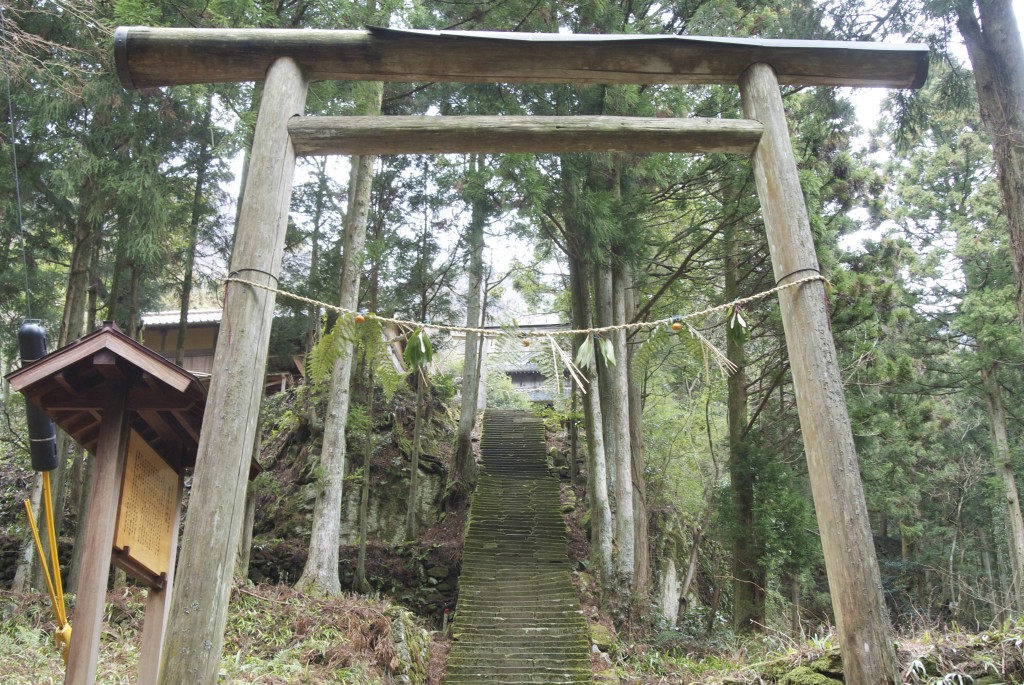
The steps up to Samehimeyama Jinja, the tutelary shrine of the Iwami Silver Mine
Iwami Ginzan (Silver Mine) is a World Heritage site, situated in Shimane prefecture on the Japan Sea coast. In the late sixteenth and early seventeenth centuries, Iwami was not only Japan’s leading silver mine but was of global significance. It was even marked on a map of the world produced in Europe. At the time Japanese silver made up a third of the world’s total, half of which was produced at Iwami. Portuguese ships traded it for the Chinese goods they brought to Japan, and the Jesuit mission was able to flourish as a result – until the shoguns turned violently against Christianity for fear of colonialism.
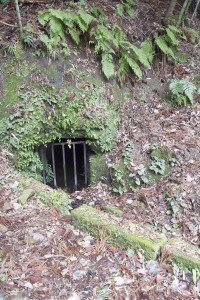
Dotted over the wooded hill are the remains of 600 shaft openings
The mine was first developed in 1526 by a merchant from Hakata, who noticed a glow from one of the area’s hills. Soon afterwards he invited a pair of Koreans to set up an advanced production method known as ‘cupellation‘, by which crushed silver ore is mixed with a solvent to remove impurities. The method soon spread to Japan’s other silver mines, transforming the country from a net importer to a major exporter. At its peak the mine involved ten thousand people and 150 villages. Some 600 shafts were dug during the four centuries of its operation.
Once the surface ore was used up, digging had to go deeper and deeper which meant that drainage became ever more costly. Eventually the business became unprofitable, and in 1923 the mine was forced to close. The area fell into decay until a determined effort at conservation led to national recognition.
World Heritage registration rested on several factors, which included the mine’s global significance, the well-preserved remnants, and the environmental aspect, for extensive replanting was carried out over the centuries to replace trees used for fuel. It means that today the whole area – unexpectedly – is immersed in a pleasant mixed woodland.
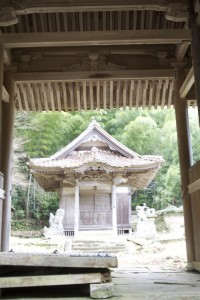
View from the Chumon gate of the dilapidated Toyosaka Jinja, in disuse like the mine itself
Mining was carried out manually with a hammer and chisel, the only light being a simple wick in a turtle shell. Conditions were harsh, with poor ventilation, dusty air and back-breaking loads carried along low passages. Few survived very long, and there were celebrations for those who reached their thirtieth birthday.
Walking through the area one often comes across protective shrines and Buddhist memorials. The main shrine was Sahimeyama Jinja (see pic above), where the kami of mines and metallurgy was worshipped – Kanayamahiko no mikoto. The shrine was founded in the mid-fifteenth century, though the current buildings date to 1819. According to a World Heritage publication, it’s one of the biggest mountain shrines in the country.
Not far away is Toyosaka Jinja, built for the Mori clan who at one time owned the mine. After the battle of Sekigahara in 1600, the Tokugawa took direct ownership of the mine and installed their own administrators. The shrine was neglected and fell into disrepair, only to be repaired in the nineteenth century by the Choshu clan based in nearby Yamaguchi who fought against the Tokugawa in the Meiji Restoration. As the mining wound down, however, so did the fortunes of the shrine and today it has a forlorn and deserted air.
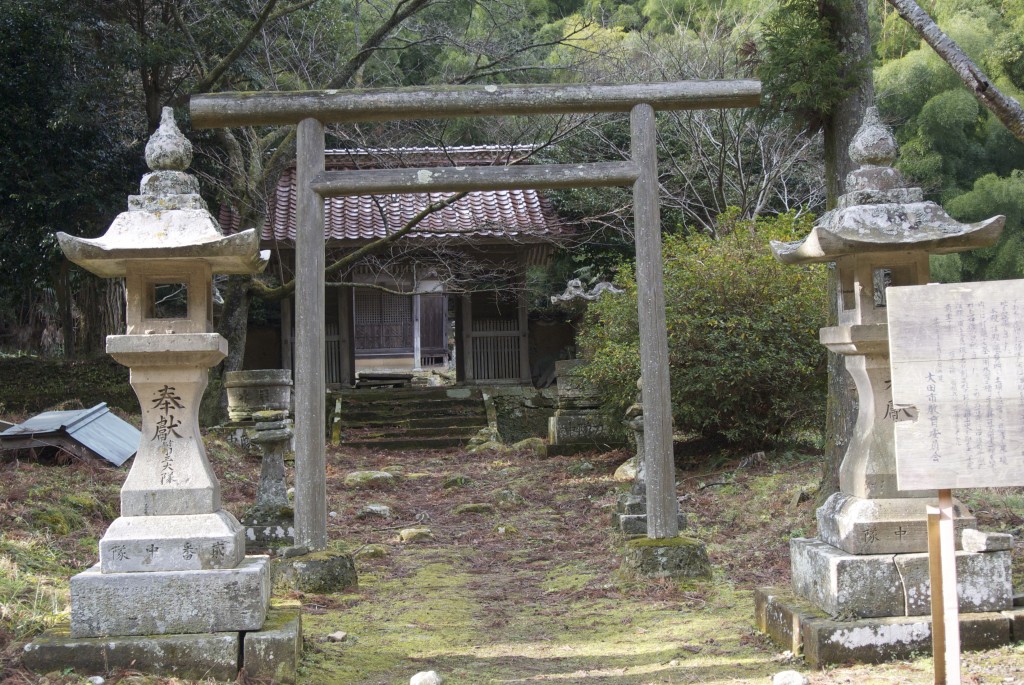
Toyosaka Jinja, which has seen better days
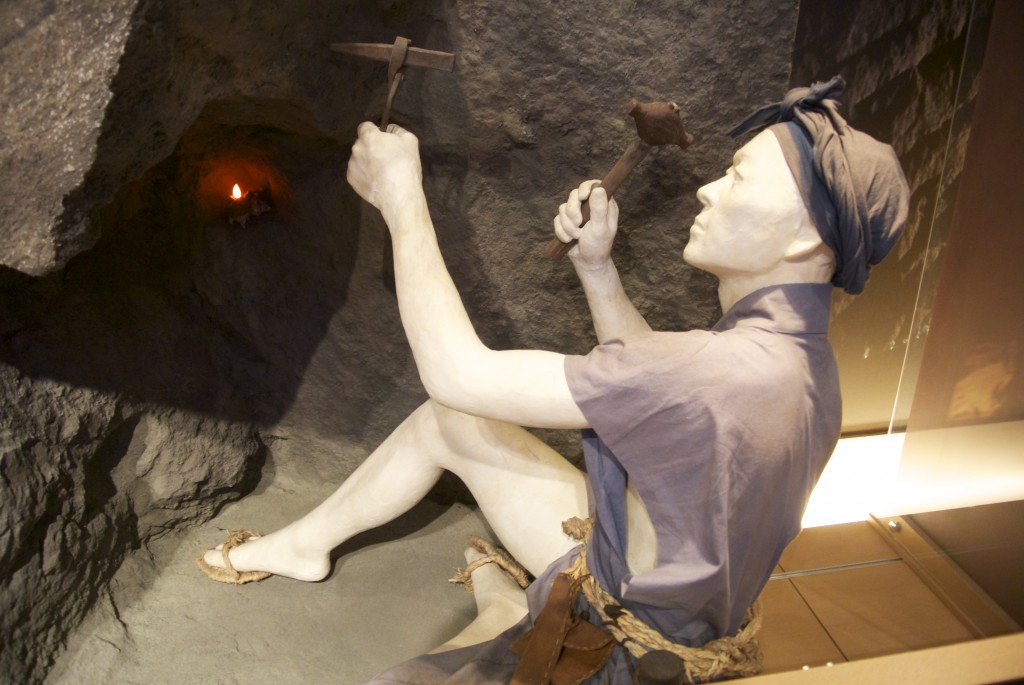
Model of a how a miner would have looked and worked, with a simple wick in a sea shell for light
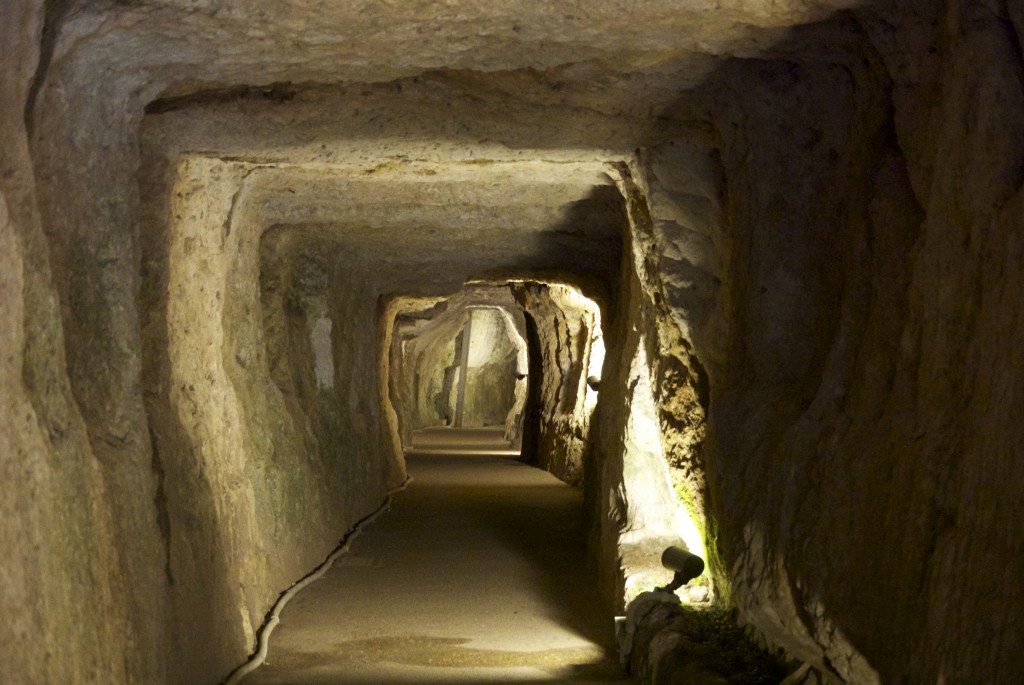
The Ryugenji mine shaft, which was once worked on by 36 miners, including ten-year old boys who carried out chores and errands
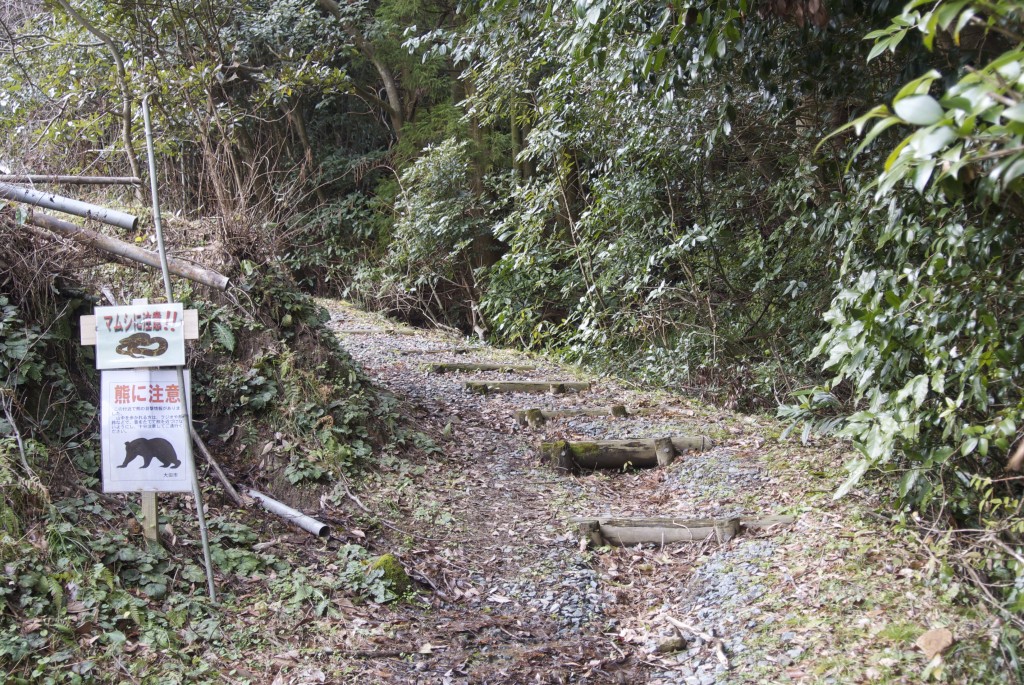
One of several tracks in the area, in this case leading to a hillfort. 'Beware of bears; beware of poisonous snakes,' warn the notices. Beware of falling down mine holes, they could have added...

Thanks for the post John. After travelling to South America in 2009 I became aware of the crucial importance of the silver mined in Peru and Bolivia in the 1500 and 1600s (after Spanish colonisation) to global trade. More recently I discovered that Japan also played a critical role, as your post indicates. The history of silver production and it’s impact on world history is indeed a fascinating one. Iwami is another place to put on our list to visit on one of our regular trips to Japan.